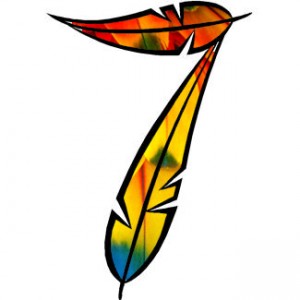9.1 TRANSPORT IN PLANTS
Water is indispensable to vegetation. It is fundamental for photosynthesis and turgor, as well as a great part of the cell exercises happen in the nearness of water atoms. Inside temperature of plant body is likewise directed by water. Arrive plants get water and minerals from soil. After assimilation by roots, water and minerals must be transported to the ethereal parts of body. So also nourishment is produced in leaves (by photosynthesis). This nourishment is transported to different parts of body for use and capacity.
9.1.1 WATER AND ION UPTAKE
Furthermore to anchor the plant, roots perform two other imperative functions. First; they take in water and salts from soil. 2nd; they furnish conducting tissues for distributing these supplies to the tissues of stem.
The conducting tissues (xylem and phloem) of root are grouped within the centre to type a rod-formed core. This rod extends throughout the size of root. External the conducting tissues, there is a slim layer of thin-walled cells, the pericycle. A single layer of cells i.E.Endodermis surrounds this pericycle. Outside to this, there’s a wide zone of cortex. It contains massive and skinny-walled cells.Cortex is bounded on external by way of a single layer of epidermal cells. Roots also have clusters of tiny root hairs, that are simply the extensions of epidermal cells.
Root hairs provide significant floor area for absorption. They develop out into the spaces between soil particles where they’re in direct contact with water. The cytoplasm of root hairs has greater attention of salts than soil water, so water moves by osmosis into root hairs. Salts additionally enter root hairs by diffusion or energetic transport. After their entry into root hairs, water and salts journey by way of intercellular spaces or via cells (via channels, referred to as plasmodesmata) and reach xylem tissue. Once in xylem, water and salts are carried to all of the aerial constituents of plant.
9.1.2 TRANSPIRATION
Transpiration is the loss of water from plant surface through dissipation. This misfortune may happen through stomata in leaves, through the fingernail skin display on leaf epidermis, and through exceptional openings called lenticels exhibit in the stems of a few plants.
The greater part of the transpiration happens through stomata and is called stomatal transpiration. The mesophyll cells of leaf give huge surface territory to the dissipation of water. Water is drawn from xylem into mesophyll cells, from where it turns out and makes a water-film on the cell dividers of mesophyll.
FACTORS AFFECTING THE RATE OF TRANSPIRATION
The price of transpiration is straight managed by the outlet and closing of stomata and it is under the impact of light. In robust gentle, the price of transpiration could be very excessive as in comparison with dim mild or no gentle. Other causes which affect the fee of transpiration are given under.
Temperature
better temperature reduces the humidity of surrounding air and also increases the kinetic vigour of water molecules. In this method it raises the cost of transpiration. The expense of transpiration doubles with each rise of 10 oC in temperature. But, very excessive temperatures i.E. Forty-45 oC rationale closure of stomata, so transpiration stops and plant does now not unfastened the much wanted water.
Air humidity
When air is dry, water vapours diffuse extra speedily from the skin of mesophyll cells into leaf air spaces and then from air areas to external. This raises the rate of transpiration. In humid air, the rate of the diffusion of water vapours is reduced and the rate of transpiration is low.
Air movement
Wind (air in motion) includes away the evaporated water from leaves and it reasons an broaden in the cost of evaporation from the surfaces of mesophyll. When air is still, the fee of transpiration is decreased.
Leaf surface area
The expense of transpiration also is dependent upon the skin subject of leaf. Extra floor area supplies extra stomata and there may be more transpiration .
SIGNIFICANCE OF TRANSPIRATION
Transpiration is called a fundamental evil. It implies that transpiration is a probably hazardous method however is unavoidable too. Transpiration is also a harmful approach within the sense that in the course of the conditions of drought, lack of water from plant results in critical desiccation, wilting and almost always demise.
On the other hand, transpiration is vital too. It creates a pulling force referred to as transpirational pull which is basically responsible for the conduction of water and salts from roots to the aerial components of plant physique. When water transpires from the surfaces of plant, it leaves a cooling outcome on plant. That is in particular fundamental in warmer environments. Additionally, the moist surfaces of leaf cells enable gaseous trade.
9.2 TRANSPORT IN HUMAN
Like different larger animals, the assignment of the transport of distinctive material in human body is performed via two systems i.E. Blood circulatory system and lymphatic method. The 2 programs are good-coordinated and related to every other. Here we will be able to go into the details of human blood circulatory process (or cardiovascular system). Like different vertebrates, people have a closed blood circulatory process (that means that blood not ever leaves the network of arteries, veins and capillaries).
The principal accessories of the human blood circulatory approach are blood, heart and blood vessels.
9.2.1 BLOOD
Blood is a specialised physique fluid (a connective tissue) that’s composed of a liquid known as blood plasma and blood cells. The weight of blood in our physique is set 1/12th of our body. The common adult physique has about 5 litres of blood.
In a healthful character, plasma constitutes about fifty five% through volume of blood, and cells or phone-like bodies are about forty five% by quantity of the blood
BLOOD PLASMA
Plasma is chiefly water wherein proteins, salts, metabolites and wastes are dissolved.Water constitutes about 90-92% of plasma and 8-10% are dissolved supplies. Salts make up zero.9 % of plasma, by way of weight. Sodium chloride (the desk salt) and salts of bicarbonate are present in giant amounts. Ca, Mg, Cu, k and Zn are found in hint quantities. Alterations within the attention of any salt can alternate the pH of blood(natural is 7.4). Proteins make 7-9 % by weight of plasma. The most important proteins gift in plasma are antibodies, fibrinogen (blood clotting protein), albumin (continues the water stability of blood) and so on. Plasma additionally contains the digested food (absorbed from digestive procedure), nitrogenous wastes and hormones. Respiratory gases i.E. CO2 and O2 are gift in the plasma
BLOOD CELLS and mobilephone-like our bodies
These incorporate red blood cells (erythrocytes), white blood cells (leukocytes) and platelets (thrombocytes).
Red Blood Cells (Erythrocytes)
These are the most countless of blood cells. A cubic millimeter of blood includes 5 to 5.5 million of RBCs in adult males, and 4 to 4.5 million in ladies. When RBCs are fashioned, they’ve nucleus. In mammals, when a crimson blood mobilephone matures, its nucleus is lost. After the lack of nucleus, RBC enters blood. About 95% of the cytoplasm of RBCs is stuffed with hemoglobin, which transports O2 and small amounts of CO2 .The rest 5% consists of enzymes, salts and different proteins. RBCs are biconcave and have an elastic mobile membrane. Within the embryonic and foetal lifestyles, they’re formed in liver and spleen. In adults, they’re shaped within the purple bone marrow of brief and flat bones, equivalent to sternum, ribs and vertebrae. Ordinary lifestyles span of RBC is set four months (120 days) after which it breaks down in liver and spleen by way of phagocytosis.
White Blood Cells (Leukocytes)
These are colourless, since they do not include pigments. They aren’t restricted to blood vessels and in addition migrate out into tissue fluid. One cubic millimeter of blood contains 7000 to 8000 WBCs. Their lifestyles span tiers from months to even years, depending on body’s wants. WBCs operate as the important agents in body’s defence approach. There two essential varieties of WBCs.
Granulocytes have granular cytoplasm. These include neutrophils (destroy small particles through phagocytosis), eosinophils (smash inflammatory resources and kill parasites) and basophils (avert blood clotting).
Agranulocytes have clear cytoplasm and include monocytes (produce macrophages which engulf germs) and B and T lymphocytes (produce antibodies and kill germs).




